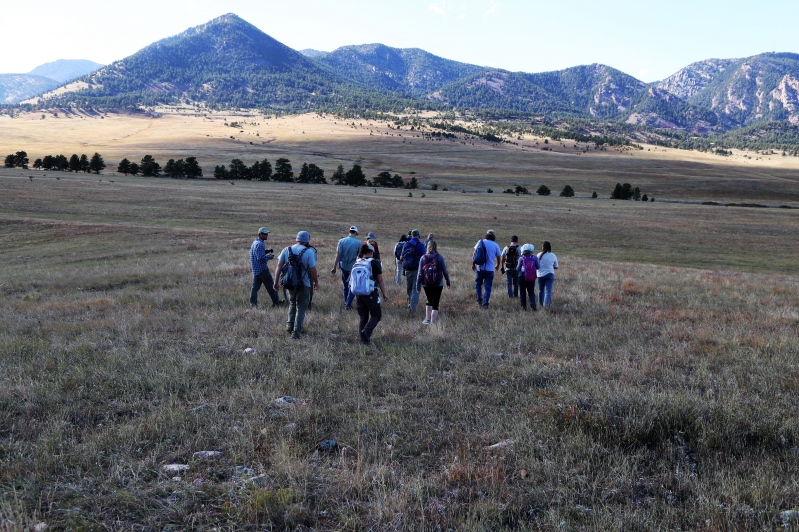 s, Fort Collins, Colorado, on the edge of the majestic Front Range. The event brought 400 attendees and featured almost 200 speakers, and was supported by many local organizations such as the City of Fort Collins Natural Areas, Colorado State University, Denver Natural Resources, The Nature Conservancy Colorado Field Office, Larimer Country Natural Resources, City of Boulder Open Space & Mountain Parks, Colorado Natural Heritage Program – and Odells Brewery, our local Beer Sponsor for the event.
s, Fort Collins, Colorado, on the edge of the majestic Front Range. The event brought 400 attendees and featured almost 200 speakers, and was supported by many local organizations such as the City of Fort Collins Natural Areas, Colorado State University, Denver Natural Resources, The Nature Conservancy Colorado Field Office, Larimer Country Natural Resources, City of Boulder Open Space & Mountain Parks, Colorado Natural Heritage Program – and Odells Brewery, our local Beer Sponsor for the event.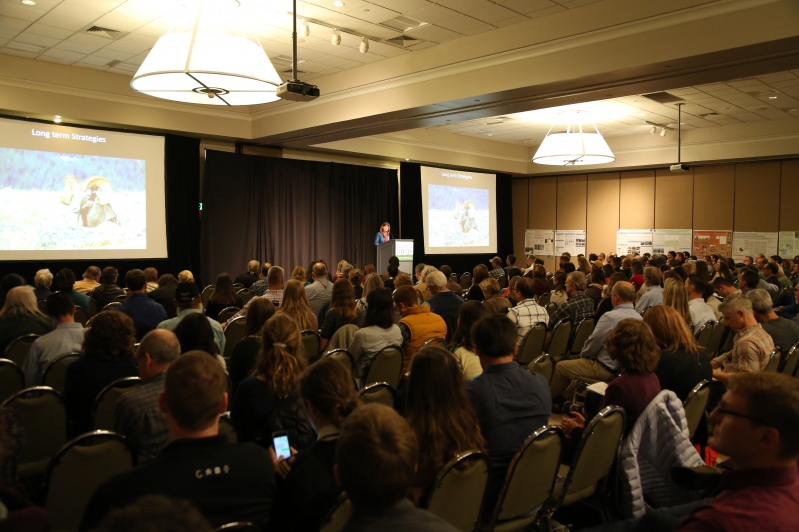 One of the reasons Fort Collins was the 2017 conference destination is that the region offers so many innovative examples of natural areas management and preservation – many of which were discussed during the opening plenary session, closing plenary panel, various presentations, and showcased during the highly popular Field Workshops.
One of the reasons Fort Collins was the 2017 conference destination is that the region offers so many innovative examples of natural areas management and preservation – many of which were discussed during the opening plenary session, closing plenary panel, various presentations, and showcased during the highly popular Field Workshops.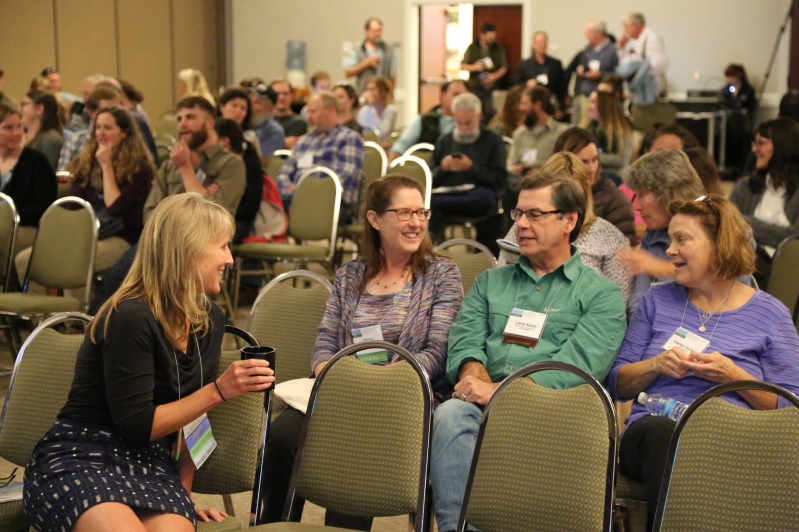 areas professionals. After a welcome from Natural Areas Association Executive Director Lisa Smith and Conference Chair Terri Hogan of the National Park Service, our opening plenary kicked off with a keynote was given by Darla Sidles, the Superintendent of the Rocky Mountain National Park. Darla’s keynote, Keeping Natural Areas Natural: Juggling Resource Protection and Heavy Visitor Use, took on a growing management challenge for some of our most popular natural areas. In Deep Advocacy, Click-Bait Hazards, and Collaborative Conservation, John Stokes, Director of the City of Fort Collins Natural Area Department, talked about the possible role of collaborative empowerment in the future of our profession, and Dave Anderson, Director of the Colorado Natural Heritage Program at CSU, spoke on the natural history of Colorado.
areas professionals. After a welcome from Natural Areas Association Executive Director Lisa Smith and Conference Chair Terri Hogan of the National Park Service, our opening plenary kicked off with a keynote was given by Darla Sidles, the Superintendent of the Rocky Mountain National Park. Darla’s keynote, Keeping Natural Areas Natural: Juggling Resource Protection and Heavy Visitor Use, took on a growing management challenge for some of our most popular natural areas. In Deep Advocacy, Click-Bait Hazards, and Collaborative Conservation, John Stokes, Director of the City of Fort Collins Natural Area Department, talked about the possible role of collaborative empowerment in the future of our profession, and Dave Anderson, Director of the Colorado Natural Heritage Program at CSU, spoke on the natural history of Colorado.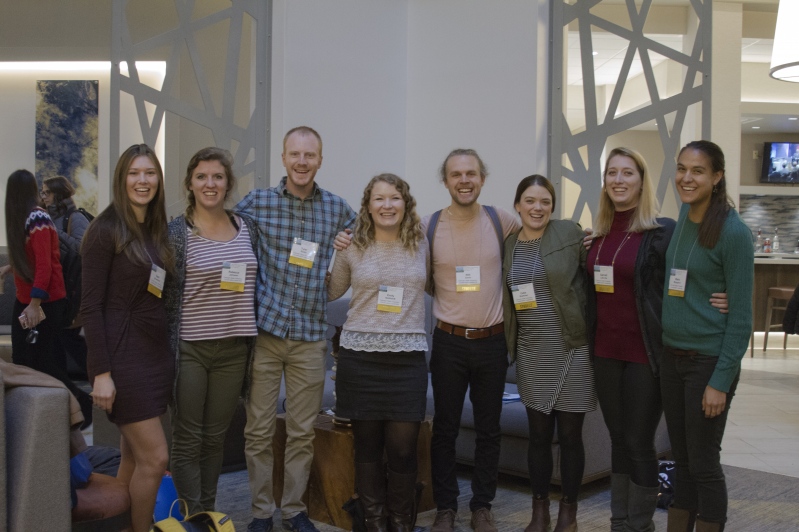 Our closing plenary focused on the sometimes overlooked role of smaller natural areas in the goals of preservation and management. Managing Smaller Natural Areas: Case Studies on the Role they Play in Protection started with case studies and ended with a panel moderated by Greg Aplet, Senior Science Director of the Wilderness Society. Scott Black, Executive Director of the Xerces Society talked about how partnership helped to conserve the endangered Mardon Skipper butterfly. Heather Knight, Associate Director of the Center for Collaborative Conservation, focused on the crucial role played by collaboration in her land preservation and management work in her presentation If You Want to Go Fast, Go Alone. If You Want to Go Far, Go Together. Reed Noss, of the Florida Institute for Conservation Science, tied the preservation of a patchwork of small natural and semi-natural areas to the successful conservation of larger ones in Florida.
Our closing plenary focused on the sometimes overlooked role of smaller natural areas in the goals of preservation and management. Managing Smaller Natural Areas: Case Studies on the Role they Play in Protection started with case studies and ended with a panel moderated by Greg Aplet, Senior Science Director of the Wilderness Society. Scott Black, Executive Director of the Xerces Society talked about how partnership helped to conserve the endangered Mardon Skipper butterfly. Heather Knight, Associate Director of the Center for Collaborative Conservation, focused on the crucial role played by collaboration in her land preservation and management work in her presentation If You Want to Go Fast, Go Alone. If You Want to Go Far, Go Together. Reed Noss, of the Florida Institute for Conservation Science, tied the preservation of a patchwork of small natural and semi-natural areas to the successful conservation of larger ones in Florida.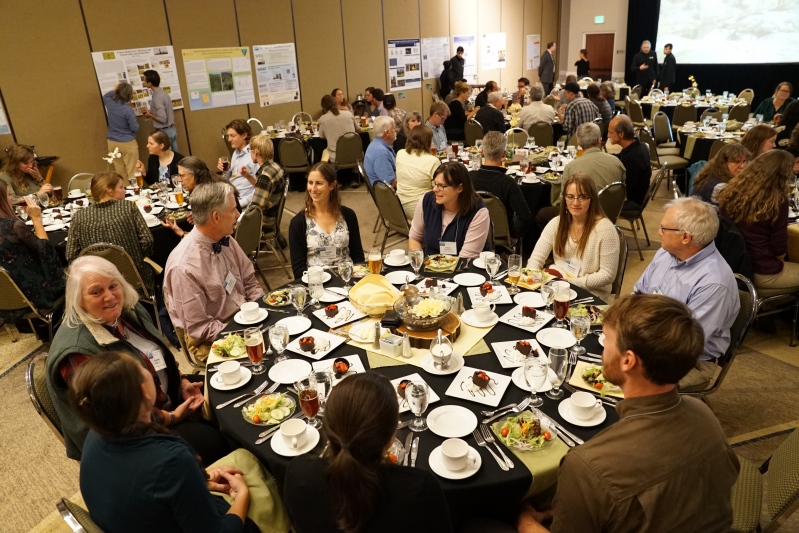 one in the natural areas community who can benefit from them, so the video archive of all plenary talks and the panel are freely available on the NAA YouTube channel.
one in the natural areas community who can benefit from them, so the video archive of all plenary talks and the panel are freely available on the NAA YouTube channel.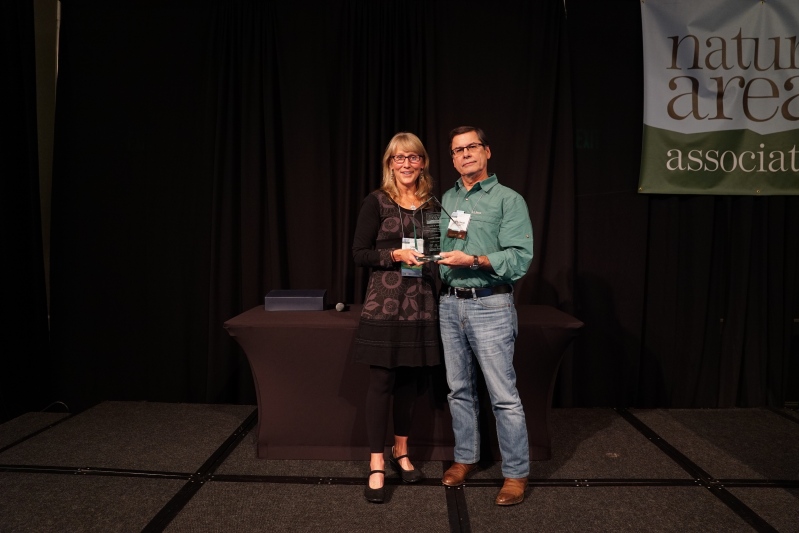 The 2017 George B. Fell and Carl N. Becker Awards were given Wednesday, October 11 at the annual Awards Dinner at the Hilton Fort Collins. The George B. Fell Award, the NAA’s highest award, was given to Larry Smith (see picture at left), who from 1990 to his retirement in 2015, worked as a natural protection manager for the Virginian Natural Heritage Program. The 2017 winner of the Carl N. Becker Stewardship Award was Bill Kleiman, who for 24 years has been the project director at The Nature Conservancy’s Nachusa Grasslands in Illinois. We at NAA could not be more proud of these two winners.
The 2017 George B. Fell and Carl N. Becker Awards were given Wednesday, October 11 at the annual Awards Dinner at the Hilton Fort Collins. The George B. Fell Award, the NAA’s highest award, was given to Larry Smith (see picture at left), who from 1990 to his retirement in 2015, worked as a natural protection manager for the Virginian Natural Heritage Program. The 2017 winner of the Carl N. Becker Stewardship Award was Bill Kleiman, who for 24 years has been the project director at The Nature Conservancy’s Nachusa Grasslands in Illinois. We at NAA could not be more proud of these two winners. Javier Sagra for “Predation on Early Recruitment in Mediterranean Forests After Prescribed Fires”; second place was Andreas Wion for “Effects of Climate Change on Mast-Seeding in a Semi-arid Conifer: Pinyon Pine (Pinus Edulis)”; and third place was Lydia Baldwin for “Restoring Carbon Sequestration Processes in a degraded Wet Meadow. In papers, first place was awarded to Erika Valek for “Challenges of Utilizing Municipal Compost as an Amendment in Boreal Forest Reclamation on Nutrient Poor Sites”; second place went to Thomas Timberlake for “Examining the U.S. Forest Service’s Climate Change Vulnerability Assessments: Themes and Opportunities” and third place went to Allison E. Rhea for “Tracing Elevated Stream Nutrient Export Back to Wildfire.” Congratulations to them all!
Javier Sagra for “Predation on Early Recruitment in Mediterranean Forests After Prescribed Fires”; second place was Andreas Wion for “Effects of Climate Change on Mast-Seeding in a Semi-arid Conifer: Pinyon Pine (Pinus Edulis)”; and third place was Lydia Baldwin for “Restoring Carbon Sequestration Processes in a degraded Wet Meadow. In papers, first place was awarded to Erika Valek for “Challenges of Utilizing Municipal Compost as an Amendment in Boreal Forest Reclamation on Nutrient Poor Sites”; second place went to Thomas Timberlake for “Examining the U.S. Forest Service’s Climate Change Vulnerability Assessments: Themes and Opportunities” and third place went to Allison E. Rhea for “Tracing Elevated Stream Nutrient Export Back to Wildfire.” Congratulations to them all!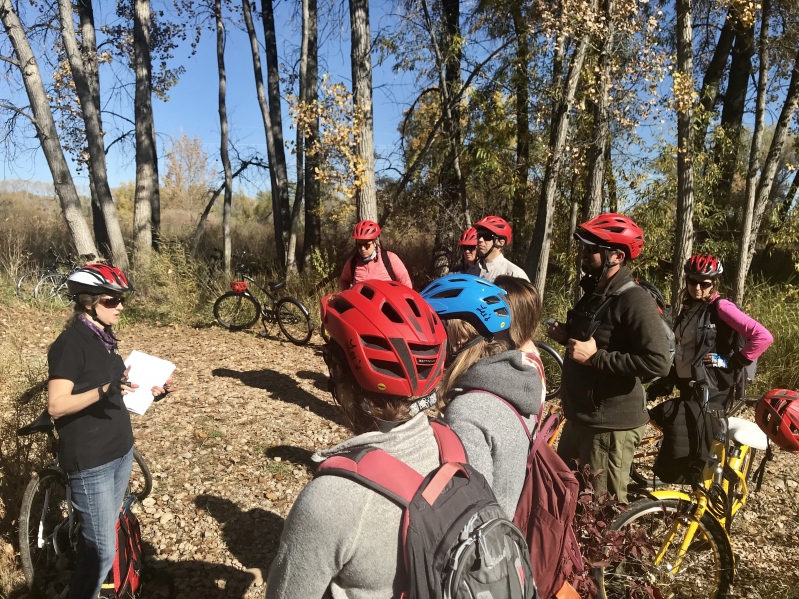 With so many nearby, stunning natural areas, attendees of the conference could choose from seven Field Workshops at the 2017 conference. From Rocky Mountain National Park to Soapstone Prairie Natural Area; from the Urban River Restoration Bike Ride to the Poudre River and Poudre Canyon, these workshops showcased a wide variety of land and natural areas management approaches.
With so many nearby, stunning natural areas, attendees of the conference could choose from seven Field Workshops at the 2017 conference. From Rocky Mountain National Park to Soapstone Prairie Natural Area; from the Urban River Restoration Bike Ride to the Poudre River and Poudre Canyon, these workshops showcased a wide variety of land and natural areas management approaches.Support the people who manage our natural areas and protect biodiversity in perpetuity.